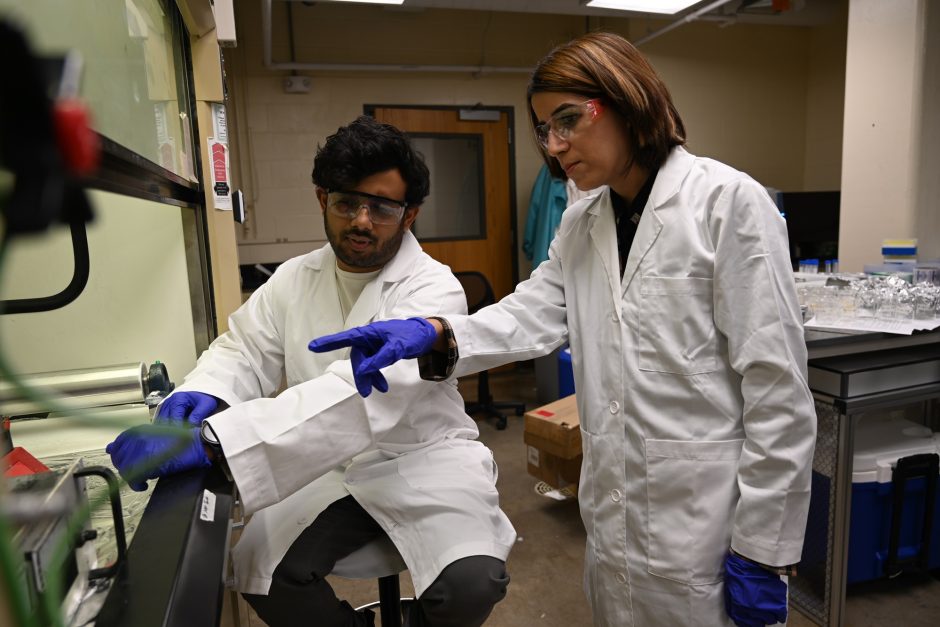By Eric Stann

Feb. 26, 2025
Contact: Eric Stann, StannE@missouri.edu
Photo by Zac Anderson
Farmers are always looking for smarter ways to boost crop health, and one of the industry’s latest game-changers is polymer-coated, controlled-release fertilizers (PC-CRFs). These high-tech soil enhancers deliver nutrients gradually, ensuring plants get exactly what they need when they need it without the waste of traditional methods.
While PC-CRFs can boost crop efficiency, a new study from University of Missouri researcher Maryam Salehi and collaborators uncovers a downside — microplastic pollution. As the polymer coatings break down in the soil, they release tiny plastic particles into the environment.
“In PC-CRFs, the plant nutrients are enclosed within a microcapsule,” said Salehi, an associate professor of civil and environmental engineering at Mizzou’s College of Engineering. “This microcapsule is designed to slowly release the fertilizers into the farmland over time. The non-biodegradable coatings left over after this process is complete can be considered microplastics.”
For Salehi and colleagues, this raises concerns about the long-term impact of this microplastic pollution to the health of people and animals.
Since previous studies have detected microplastics in farmland, Salehi’s team is focused on two bigger questions: how much is being released, and what kinds of plastics are involved?
Until researchers can answer these questions, Salehi suggests farmers use more sustainable alternatives such as biodegradable coatings. But if PC-CRFs must be used, she urges farmers to implement effective stormwater management to prevent these microplastics from running off into nearby water sources.
Salehi said more research is needed to fully understand the consequences of PC-CRFs on the environment.
“Various soil environments, moisture conditions and soil organisms can impact the disintegration of the microcapsule differently,” she said. “Also, PC-CRFs may use different types of plastics, so further research is needed to determine the variations between them.” “Mechanisms of microplastic generation from polymer-coated controlled-release fertilizers (PC-CRFs),” was published in Journal of Hazardous Materials. Co-authors on the study are Anandu Nair Gopakumar, Arghavan Beheshtimaal, and Alexander Ccanccapa-Cartagena at Mizzou; and Linkon Bhattacharjee and Farhad Jazaei at the University of Memphis.



